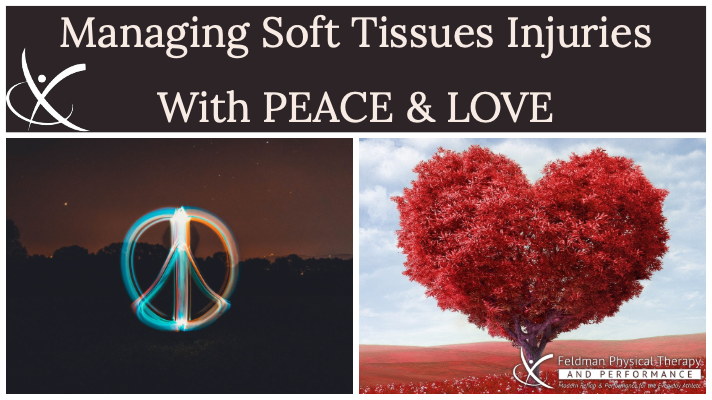
Female Athlete Triad – Real Life Scenario
May 9, 2019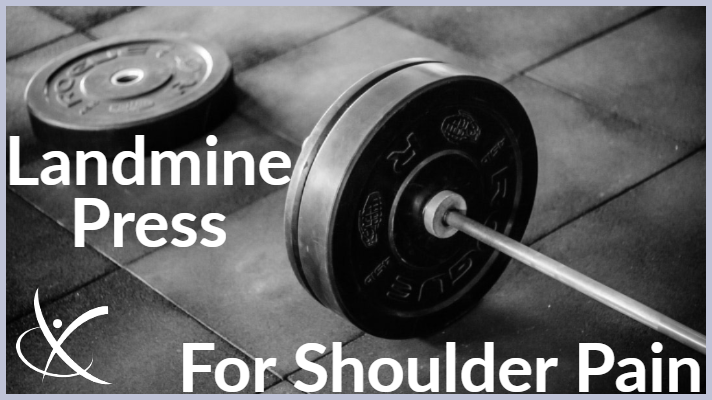
Shoulder Pain…Try A Landmine Press
May 19, 2019Acute Management Of Sprains and Strains
PEACE & LOVE
Sprained Ankle or Pulled Muscle: Show it some PEACE AND LOVE
I can’t tell you how many times over the years I’ve been asked the question, “ice or heat” for some type of ache or pain a family member or patient has. I also can’t tell you the number of times someone spits out acronyms such as R.I.C.E or P.R.I.C.E when talking about how to take care of an injury. Of course, it’s important to rest an injury, but for how long is the question? We also need to revise some of these old school trains of thought.
Two fellow physiotherapists from Canada published a blog in the British Journal of Sports Medicine with two new terms describing how to address soft tissue injuries (muscle strains, joint sprains, etc.) and I’ve taken quite a liking to it. Not only is it something that we can all remember, but it is something we all need in our life: PEACE AND LOVE.
So, as compared to the longstanding P.R.I.C.E. (Protect, Rest, Ice, Compression, Elevation) and R.I.C.E. (Rest, Ice, Compression, Elevation) acronyms, P.E.A.C.E. and L.O.V.E. gives us a little more information on how to treat these injuries properly! It doesn’t only address the first few days of injury, but also how we should progress afterwards.
So, how can we rehabilitate with peace and love? I’ll break it down piece by piece. For the first 24-72 let that area of ache be at peace.
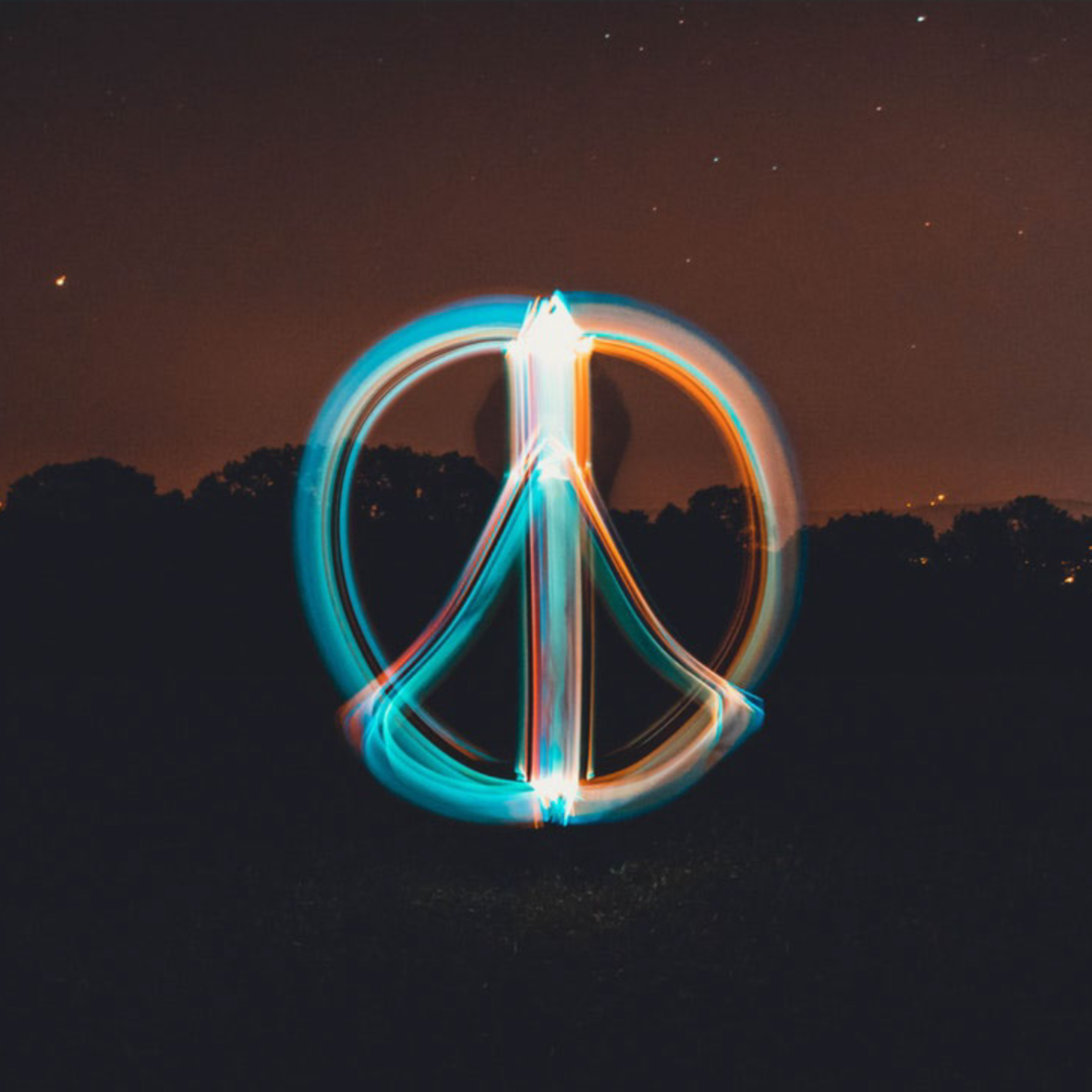 P stands for protect. Why is this important? Protecting an injured area will help decrease the amount of threat injured tissue feels. HOWEVER, protection should be limited and guided by an individual’s pain levels. If the protection phase is extended too long, it can actually be a hindrance to tissue healing and pain decreasing.
P stands for protect. Why is this important? Protecting an injured area will help decrease the amount of threat injured tissue feels. HOWEVER, protection should be limited and guided by an individual’s pain levels. If the protection phase is extended too long, it can actually be a hindrance to tissue healing and pain decreasing.
E stands for elevate. Get that limb above your heart to promote fluid movement! This can help decrease the swelling you see post injury.
A stands for avoid anti-inflammatory modalities. Oh, this may shock you. Why should you avoid anti-inflammatory medication or icing when you sustain an injury? I’ve reiterated this in many a facebook live, but the inflammatory response is actually NEEDED to promote tissue healing. One of the first phases of tissue regeneration is inflammation, and if we stunt this critical aspect of healing, long term tissue repair can be affected!
C stands for compression. Compression still stands as a logical option for treating a soft tissue injury as it has shown positive benefit especially when treating injuries such as ankle sprains. This can be provided by compression sleeves, ace bandages, or taping techniques.
E stands for education. This isn’t necessarily your job, and I don’t always recommend education via Dr. Google. There’s a lot of misinformation on the interweb regarding injury treatment and rehabilitation. This is where a visit to your trusted physical therapist may be to your benefit. As I’m doing now, I am here to educate you, protect you, and teach you that injuries can improve as long as they’re given peace and love :)! As healthcare providers, we are here to give you individualized education regarding your injury and provide you with a realistic rehabilitation guideline! Pain does not always equal gain and physical therapy does not always mean pain and torture. Remember that!
So now that 72 hours has passed, it’s time to show that area of injury a little bit of LOVE.
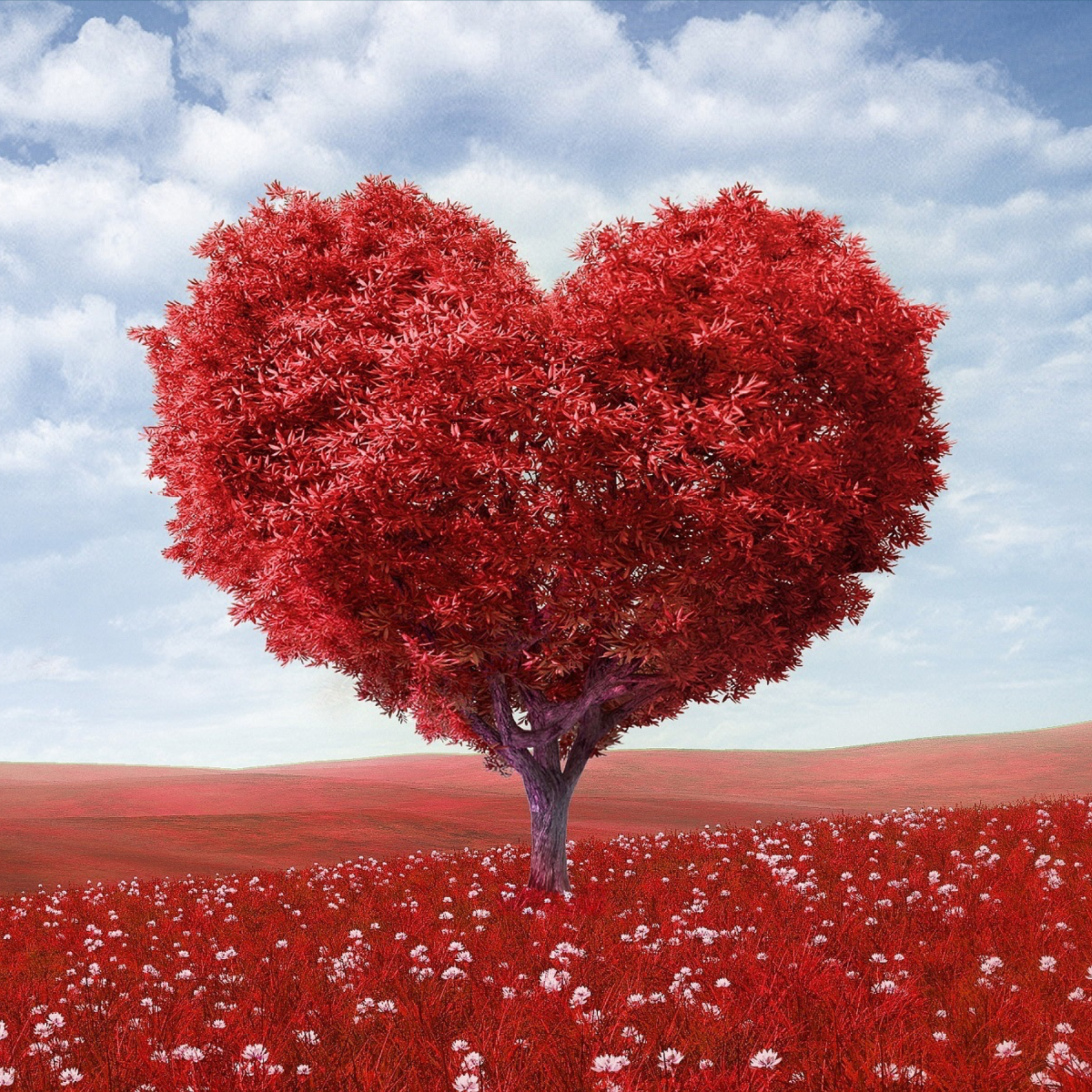 L stands for load. Now, what is load? Basically, it’s how much stress our muscles and joints can handle. So, basically if you strained your hamstring, the first day you may be hopping around, the second day limping and the third day you feel as if you can walk normally. What has been happening throughout this scenario is your muscle is being able to accept more LOAD day by day. One thing I point out to a lot of individuals is temporary pain that subsides within 12-24 hours after activity isn’t necessarily a bad thing. If the pain persists and doesn’t go away within that time period, then we know you’ve loaded too much too fast! Monitor your pain closely and tread with caution as you return to your normal tasks. If you need some help determining appropriate loading strategies, feel free to give us a call!
L stands for load. Now, what is load? Basically, it’s how much stress our muscles and joints can handle. So, basically if you strained your hamstring, the first day you may be hopping around, the second day limping and the third day you feel as if you can walk normally. What has been happening throughout this scenario is your muscle is being able to accept more LOAD day by day. One thing I point out to a lot of individuals is temporary pain that subsides within 12-24 hours after activity isn’t necessarily a bad thing. If the pain persists and doesn’t go away within that time period, then we know you’ve loaded too much too fast! Monitor your pain closely and tread with caution as you return to your normal tasks. If you need some help determining appropriate loading strategies, feel free to give us a call!
O stands for optimism. We all know positive attitudes can net better results. That is why being optimistic is extremely important when an injury occurs. Negative attitudes have been linked to poor outcomes and lengthened rehabilitation processes. Although one needs to be realistic when it comes to expected outcomes, always remember that there is a light at the end of the tunnel! I always find making short and long term goals for myself helps to stay positive!
V stands for vascularization. Big word here. To simplify, we’re talking about blood supply to tissues in the body. How do we improve this? By getting our heart to work a little bit harder. I’m sure you’ve heard that statement “cardiovascular exercise” and that’s exactly what I’m getting at here. Just because you’re injured doesn’t mean we can’t get this system working a bit. If you have a shoulder or elbow injury, go ahead and do some squats and if you have a hip or knee injury go ahead and do some bicep curls! Yes, lifting things can help improve cardiovascular function as well. Improvements in cardiovascular function have shown to improve attitudes, tissue healing and pain levels!
E stands for Exercise. An injury doesn’t mean we have to stop ALL activities. It more than likely means they just have to be modified. Exercise is extremely important for returning a human back to normal function after a painful episode. Why is this? Well, it helps us regain movement and strength necessary for daily activities. When returning to exercise, remember the loading principles discussed above! Don’t push through pain, especially if it persists for prolonged periods after exercise.
Remember, protect injuries, monitor your pain, and load as tolerated. Give your new injuries some peace and love and believe in yourself. If you’re injured and need guidance, don’t hesitate to contact your local physical therapist!
If you have any questions about this information, please do not hesitate to contact us.
A special thanks goes out to Blaise Dubois and Jean-Francois Esculier for sharing PEACE AND LOVE.
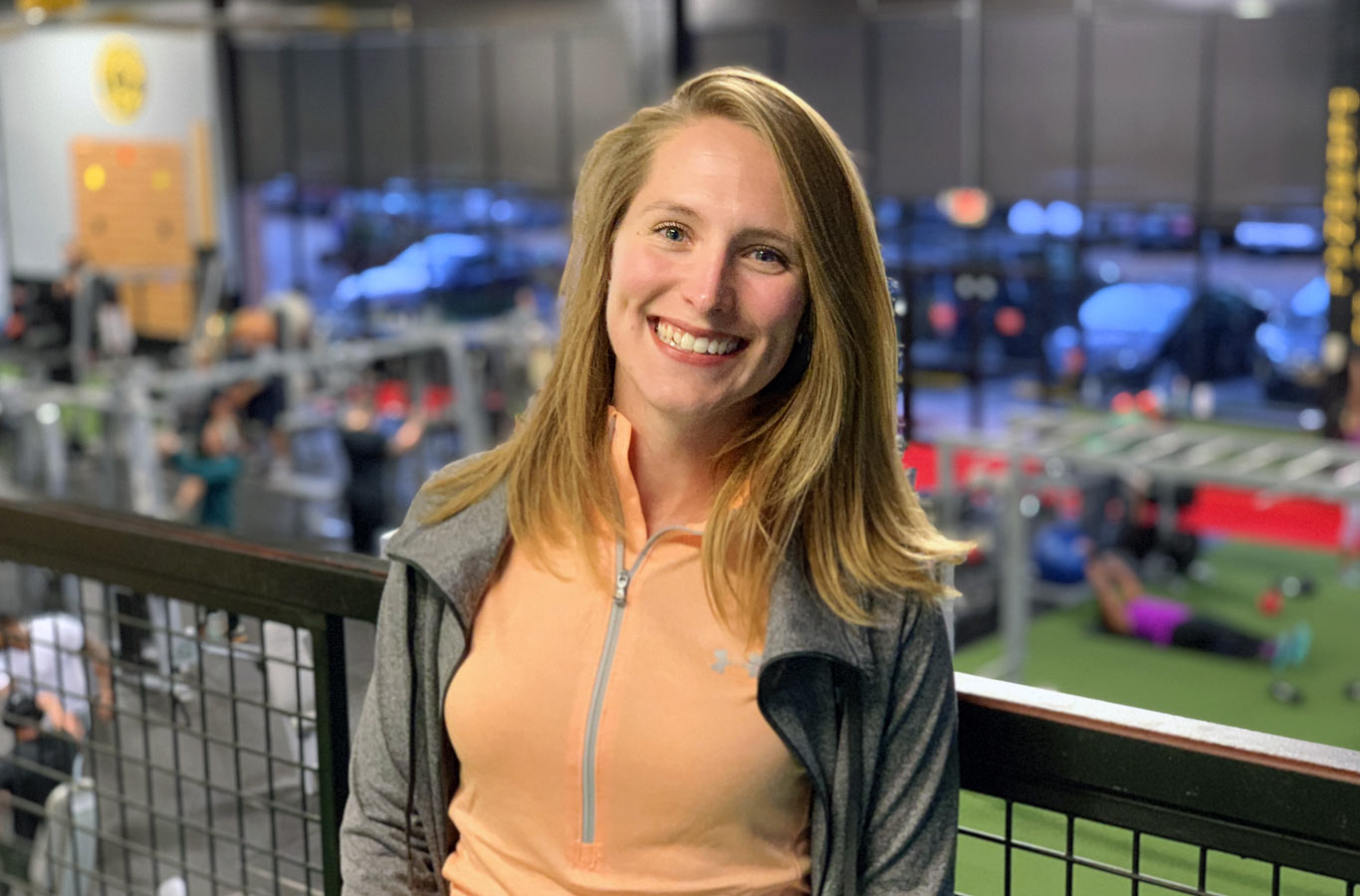
Ashley Witson, PT, DPT
Podcast: Play in new window | Download


